What’s to Eat and Drink on Campus? Public and Planetary Health, Public Higher Education, and the Public Good
Abstract
1. Introduction
2. How Do Campus Food Environments Affect Student Food Choice, Food Security, and Health?
2.1. Campus Food Environments and Student Food Choice
2.2. Student Food Security, Food Choice, and Health
2.3. Campus Food Environments, Student Food Security, and Health
3. Why Are Campus Food Environments Unhealthy and Unsustainable?
3.1. PHEIs, Neoliberalism, and Food
3.2. PHEIs’ Public Good Mission and the Disconnect with Campus Food Environments
3.3. The FI Metric, Campus Food Environments, and Neoliberal Business Policies
4. How Can PHEIs Transform Campus Food Environments Commensurate with the Unprecedented Challenge of the Public and Planetary Health Crisis?
4.1. Past Approaches Limited by Neoliberalism
4.2. Beyond Neoliberalism
5. Conclusions
Funding
Institutional Review Board Statement
Informed Consent Statement
Data Availability Statement
Acknowledgments
Conflicts of Interest
References
- Clark, M.A.; Springmann, M.; Hill, J.; Tilman, D. Multiple health and environmental impacts of foods. Proc. Natl. Acad. Sci. USA 2019, 116, 23357–23362. [Google Scholar] [CrossRef]
- Shi, Y.; Davies, A.; Allman-Farinelli, M. The Association Between Food Insecurity and Dietary Outcomes in University Students: A Systematic Review. J. Acad. Nutr. Diet. 2021, 121, 2475–2500.e1. [Google Scholar] [CrossRef]
- Morgan, H. Neoliberalism’s influence on American universities: How the business model harms students and society. Policy Futur. Educ. 2022, 20, 149–165. [Google Scholar] [CrossRef]
- Schraedley, M.K.; Jenkins, J.J.; Irelan, M.; Umana, M. The Neoliberalization of Higher Education: Paradoxing Students’ Basic Needs at a Hispanic-Serving Institution. Front. Sustain. Food Syst. 2021, 5, 689499. [Google Scholar] [CrossRef]
- UCOP (University of California Office of the President) Promoting Healthy Beverages. Available online: https://ucnet.universityofcalifornia.edu/news/2019/11/promoting-healthy-beverages.html (accessed on 1 March 2021).
- Nestle, M. Soda Politics; University of Oxford Press: Oxford, UK, 2015. [Google Scholar]
- Popkin, B.M.; Barquera, S.; Corvalan, C.; Hofman, K.J.; Monteiro, C.; Ng, S.W.; Swart, E.C.; Taillie, L.S. Towards unified and impactful policies to reduce ultra-processed food consumption and promote healthier eating. Lancet Diabetes Endocrinol. 2021, 9, 462–470. [Google Scholar] [CrossRef]
- Godfray, H.C.J.; Aveyard, P.; Garnett, T.; Hall, J.W.; Key, T.J.; Lorimer, J.; Pierrehumbert, R.T.; Scarborough, P.; Springmann, M.; Jebb, S.A. Meat consumption, health, and the environment. Science 2018, 361, eaam5324. [Google Scholar] [CrossRef]
- Swinburn, B.A.; Kraak, V.I.; Allender, S.; Atkins, V.J.; Baker, P.I.; Bogard, J.R.; Brinsden, H.; Calvillo, A.; De Schutter, O.; Devarajan, R.; et al. The global syndemic of obesity, undernutrition, and climate change: The Lancet Commission report. Lancet 2019, 393, 791–846. [Google Scholar] [CrossRef]
- IPCC (Intergovernmental Panel on Climate Change) Summary for Policymakers. IPCC Special Report on Climate Change, Desertification, Land Degradation, Sustainable Land Management, Food Security, and Greenhouse Gas Fluxes in Terrestrial Ecosystems; World Meteorological Organization: Geneva, Switzerland, 2019; Available online: https://www.ipcc.ch/report/srccl/ (accessed on 7 October 2022).
- Nugent, R.; Fottrell, E. Non-communicable diseases and climate change: Linked global emergencies. Lancet 2019, 394, 622–623. [Google Scholar] [CrossRef]
- Hickel, J.; Brockway, P.; Kallis, G.; Keyßer, L.; Lenzen, M.; Slameršak, A.; Steinberger, J.; Ürge-Vorsatz, D. Urgent need for post-growth climate mitigation scenarios. Nat. Energy 2021, 6, 766–768. [Google Scholar] [CrossRef]
- Springmann, M.; Clark, M.; Mason-D’Croz, D.; Wiebe, K.; Bodirsky, B.L.; Lassaletta, L.; de Vries, W.; Vermeulen, S.J.; Herrero, M.; Carlson, K.M.; et al. Options for keeping the food system within environmental limits. Nature 2018, 562, 519–525. [Google Scholar] [CrossRef]
- Willett, W.; Rockström, J.; Loken, B.; Springmann, M.; Lang, T.; Vermeulen, S.; Garnett, T.; Tilman, D.; DeClerck, F.; Wood, A.; et al. Food in the Anthropocene: The EAT–Lancet Commission on healthy diets from sustainable food systems. Lancet 2019, 939, 447–492. [Google Scholar] [CrossRef]
- Wiedmann, T.; Lenzen, M.; Keyßer, L.T.; Steinberger, J.K. Scientists’ warning on affluence. Nat. Commun. 2020, 11, 3107. [Google Scholar] [CrossRef]
- Vita, G.; Ivanova, D.; Dumitru, A.; García-Mira, R.; Carrus, G.; Stadler, K.; Krause, K.; Wood, R.; Hertwich, E.G. Happier with less? Members of European environmental grassroots initiatives reconcile lower carbon footprints with higher life satisfaction and income increases. Energy Res. Soc. Sci. 2020, 60, 101329. [Google Scholar] [CrossRef]
- Creutzig, F.J.; Roy, P.; Devine-Wright, J.; Díaz-José, F.W.; Geels, A.; Grubler, N.; Maϊzi, E.; Masanet, Y.; Mulugetta, C.D.; Onyige, P.E.; et al. Demand, services and social aspects of mitigation. In IPCC, 2022: Climate Change 2022: Mitigation of Climate Change. Contribution of Working Group III to the Sixth Assessment Report of the Intergovernmental Panel on Climate Change; Shukla, P.R., Slade, J.S.R., Al Khourdajie, A., van Diemen, R., McCollum, D., Pathak, M., Some, S., Vyas, P., Fradera, R., Belkacemi, M., et al., Eds.; Cambridge University Press: Cambridge, UK; New York, NY, USA, 2022. [Google Scholar] [CrossRef]
- EEA (European Environment Agency). Growth without Economic Growth; Publications Office, European Union: Luxembourg, 2021. [Google Scholar] [CrossRef]
- Clark, M.A.; Domingo, N.G.G.; Colgan, K.; Thakrar, S.K.; Tilman, D.; Lynch, J.; Azevedo, I.L.; Hill, J.D. Global food system emissions could preclude achieving the 1.5° and 2 °C climate change targets. Science 2020, 370, 705–708. [Google Scholar] [CrossRef]
- Bajželj, B.; Richards, K.S.; Allwood, J.M.; Smith, P.; Dennis, J.S.; Curmi, E.; Gilligan, C.A. Importance of food-demand management for climate mitigation. Nat. Clim. Change 2014, 4, 924–929. [Google Scholar] [CrossRef]
- Springmann, M.; Clark, M.A.; Rayner, M.; Scarborough, P.; Webb, P. The global and regional costs of healthy and sustainable dietary patterns: A modelling study. Lancet Planet. Health 2021, 5, e797–e807. [Google Scholar] [CrossRef]
- Marginson, S. Higher Education and Public Good. In Higher Education in Societies: A Multi Scale Perspective; Goastellec, G., Picard, F., Eds.; SensePublishers: Rotterdam, The Netherlands, 2014; pp. 51–71. [Google Scholar] [CrossRef]
- Locatelli, R. Education as a Public and COMMON good: Reframing the Governance of Education in a Changing Context. Education Research and Foresight Working Papers Series, No. 22; UNESCO: Paris, France, 2018; Available online: https://en.unesco.org/node/268820 (accessed on 7 October 2022).
- Hanson, M. College Enrollment & Student Demographic Statistics. Available online: https://educationdata.org/college-enrollment-statistics (accessed on 7 May 2022).
- Contento, I.R. Chapter 2. Determinants of food choice and dietary change: Implications for nutrition education. In Nutrition Education: Linking Research, Theory, and Practice, 3rd ed.; Jones & Bartlett Learning: Burlington, MA, USA, 2016; pp. 30–58. [Google Scholar]
- Pechey, R.; Clarke, N.; Pechey, E.; Ventsel, M.; Hollands, G.J.; Marteau, T.M. Impact of altering the available food options on selection: Potential mediation by social norms. Appetite 2021, 164, 105245. [Google Scholar] [CrossRef]
- Movassagh, E.Z.; Baxter-Jones, A.D.G.; Kontulainen, S.; Whiting, S.J.; Vatanparast, H. Tracking Dietary Patterns over 20 Years from Childhood through Adolescence into Young Adulthood: The Saskatchewan Pediatric Bone Mineral Accrual Study. Nutrients 2017, 9, 990. [Google Scholar] [CrossRef]
- Hu, T.; Jacobs, D.R., Jr.; Larson, N.I.; Cutler, G.J.; Laska, M.N.; Neumark-Sztainer, D. Higher Diet Quality in Adolescence and Dietary Improvements Are Related to Less Weight Gain During the Transition From Adolescence to Adulthood. J. Pediatr. 2016, 178, 188–193.e183. [Google Scholar] [CrossRef]
- Choi, Y.; Larson, N.; Gallaher, D.D.; Odegaard, A.O.; Rana, J.S.; Shikany, J.M.; Steffen, L.M.; Jacobs, D.R. A Shift Toward a Plant-Centered Diet From Young to Middle Adulthood and Subsequent Risk of Type 2 Diabetes and Weight Gain: The Coronary Artery Risk Development in Young Adults (CARDIA) Study. Diabetes Care 2020, 43, 2796–2803. [Google Scholar] [CrossRef]
- Choi, Y.; Larson, N.; Steffen, L.M.; Schreiner, P.J.; Gallaher, D.D.; Duprez, D.A.; Shikany, J.M.; Rana, J.S.; Jacobs, D.R. Plant-Centered Diet and Risk of Incident Cardiovascular Disease During Young to Middle Adulthood. J. Am. Heart Assoc. 2021, 10, e020718. [Google Scholar] [CrossRef]
- Horacek, T.M.; Erdman, M.B.; Byrd-Bredbenner, C.; Carey, G.; Colby, S.M.; Greene, G.W.; Guo, W.; Kattelmann, K.K.; Olfert, M.; Walsh, J.; et al. Assessment of the dining environment on and near the campuses of fifteen post-secondary institutions. Public Health Nutr. 2013, 16, 1186–1196. [Google Scholar] [CrossRef]
- Gonzales, R.; Laurent, J.S.; Johnson, R.K. Relationship Between Meal Plan, Dietary Intake, Body Mass Index, and Appetitive Responsiveness in College Students. J. Pediatr. Health Care 2017, 31, 320–326. [Google Scholar] [CrossRef]
- Tseng, M.; DeGreef, K.; Fishler, M.; Gipson, R.; Koyano, K.; Neill, D.B. Assessment of a University Campus Food Environment, California, 2015. Prev. Chronic Dis. 2016, 13, E18. [Google Scholar] [CrossRef][Green Version]
- Li, X.; Braakhuis, A.; Li, Z.; Roy, R. How Does the University Food Environment Impact Student Dietary Behaviors? A Systematic Review. Front. Nutr. 2022, 9, 840818. [Google Scholar] [CrossRef]
- Whatnall, M.C.; Soo, Z.M.; Patterson, A.J.; Hutchesson, M.J. University Students Purchasing Food on Campus More Frequently Consume More Energy-Dense, Nutrient-Poor Foods: A Cross-Sectional Survey. Nutrients 2021, 13, 1053. Available online: https://www.mdpi.com/2072-6643/13/4/1053 (accessed on 7 October 2022). [CrossRef]
- Pulz, I.S.; Martins, P.A.; Feldman, C.; Veiros, M.B. Are campus food environments healthy? A novel perspective for qualitatively evaluating the nutritional quality of food sold at foodservice facilities at a Brazilian university. Perspect. Public Health 2017, 137, 122–135. [Google Scholar] [CrossRef]
- Sogari, G.; Velez-Argumedo, C.; Gómez, M.I.; Mora, C. College Students and Eating Habits: A Study Using An Ecological Model for Healthy Behavior. Nutrients 2018, 10, 1823. [Google Scholar] [CrossRef]
- Watson, T.D.; Malan, H.; Glik, D.; Martinez, S. College students identify university support for basic needs and life skills as key ingredient in addressing food insecurity on campus. Calif. Agric. 2017, 71, 130–138. [Google Scholar] [CrossRef]
- Dhillon, J.; Diaz Rios, L.K.; Aldaz, K.J.; De La Cruz, N.; Vu, E.; Asad Asghar, S.; Kuse, Q.; Ortiz, R.M. We Don't Have a Lot of Healthy Options: Food Environment Perceptions of First-Year, Minority College Students Attending a Food Desert Campus. Nutrients 2019, 11, 816. [Google Scholar] [CrossRef]
- Vilaro, M.J.; Colby, S.E.; Riggsbee, K.; Zhou, W.; Byrd-Bredbenner, C.; Olfert, M.D.; Barnett, T.E.; Horacek, T.; Sowers, M.; Mathews, A.E. Food Choice Priorities Change Over Time and Predict Dietary Intake at the End of the First Year of College Among Students in the U.S. Nutrients 2018, 10, 1296. [Google Scholar] [CrossRef]
- Pelletier, J.E.; Laska, M.N. Campus Food and Beverage Purchases are Associated with Indicators of Diet Quality in College Students Living off Campus. Am. J. Health Promot. 2013, 28, 80–87. [Google Scholar] [CrossRef]
- Racine, E.F.; Schorno, R.; Gholizadeh, S.; Bably, M.B.; Hatami, F.; Stephens, C.; Zadrozny, W.; Schulkind, L.; Paul, R. A College Fast-Food Environment and Student Food and Beverage Choices: Developing an Integrated Database to Examine Food and Beverage Purchasing Choices among College Students. Nutrients 2022, 14, 900. Available online: https://www.mdpi.com/2072-6643/14/4/900 (accessed on 7 October 2022). [CrossRef]
- Biediger-Friedman, L.; Sanchez, B.; He, M.; Guan, J.; Yin, Z. Food Purchasing Behaviors and Food Insecurity among College Students at The University of Texas at San Antonio. J. Food Secur. 2016, 4, 52–57. [Google Scholar] [CrossRef]
- Bruening, M.; Brennhofer, S.; van Woerden, I.; Todd, M.; Laska, M. Factors Related to the High Rates of Food Insecurity among Diverse, Urban College Freshmen. J. Acad. Nutr. Diet. 2016, 116, 1450–1457. [Google Scholar] [CrossRef]
- USDA ERS (US Department of Agriculture, Economic Research Service). Food Security in the U.S. Survey tools. Available online: https://www.ers.usda.gov/topics/food-nutrition-assistance/food-security-in-the-u-s/survey-tools/ (accessed on 7 October 2022).
- Smith, M.D.; Rabbitt, M.P.; Coleman- Jensen, A. Who are the World’s Food Insecure? New Evidence from the Food and Agriculture Organization’s Food Insecurity Experience Scale. World Dev. 2017, 93, 402–412. [Google Scholar] [CrossRef]
- Nikolaus, C.J.; An, R.; Ellison, B.; Nickols-Richardson, S.M. Food Insecurity among College Students in the United States: A Scoping Review. Adv. Nutr. 2020, 11, 327–348. [Google Scholar] [CrossRef]
- Nazmi, A.; Martinez, S.; Byrd, A.; Robinson, D.; Bianco, S.; Maguire, J.; Crutchfield, R.M.; Condron, K.; Ritchie, L. A systematic review of food insecurity among US students in higher education. J. Hunger Environ. Nutr. 2019, 14, 725–740. [Google Scholar] [CrossRef]
- Baker-Smith, C.; Coca, V.; Goldrick-Rab, S.; Looker, E.; Richardson, B.; Williams, T. #RealCollege 2020: Five Years of Evidence on Campus Basic Needs Insecurity; The Hope Center, Temple University: Philadelphia, PA, USA, 2020; Available online: https://hope4college.com/wp-content/uploads/2020/02/2019_RealCollege_Survey_Report.pdf (accessed on 7 October 2022).
- GAO (United States Government Accountability Office). Food Insecurity. Better Information Could Help Eligible College Students Access Federal Food Assistance Benefits. Report to Congressional Requesters; GAO-19-95; GAO: Washington, DC, USA, 2018.
- Laska, M.N.; Fleischhacker, S.; Petsoulis, C.; Bruening, M.; Stebleton, M.J. Addressing College Food Insecurity: An Assessment of Federal Legislation Before and During Coronavirus Disease-2019. J. Nutr. Educ. Behav. 2020, 52, 982–987. [Google Scholar] [CrossRef]
- Mozaffarian, D.; Fleischhacker, S.; Andrés, J.R. Prioritizing Nutrition Security in the US. J. Am. Med. Assoc. 2021, 325, 1605–1606. [Google Scholar] [CrossRef]
- USDA (United States Department of Agriculture). U.S. Agriculture Secretary Tom Vilsack Highlights Key Work in 2021 to Promote Food and Nutrition Security. Available online: https://www.usda.gov/media/press-releases/2022/01/21/us-agriculture-secretary-tom-vilsack-highlights-key-work-2021 (accessed on 10 March 2022).
- Ellison-Barnes, A.; Johnson, S.; Gudzune, K. Trends in Obesity Prevalence Among Adults Aged 18 Through 25 Years, 1976–2018. JAMA 2021, 326, 2073–2074. [Google Scholar] [CrossRef]
- ACHA (American College Health Association). American College Health Association-National College Health Assessment III: Fall 2021 Reference Group Data Report; American College Health Association: Hanover, MD, USA, 2022; Available online: https://www.acha.org/documents/ncha/NCHA-III_FALL_2021_REFERENCE_GROUP_DATA_REPORT.pdf (accessed on 7 October 2022).
- DGAC (Dietary Guidelines Advisory Committee). Scientific Report of the 2020 Dietary Guidelines Advisory Committee: Advisory Report to the Secretary of Agriculture and the Secretary of Healthand Human Services; U.S. Department of Agriculture, Agricultural Research Service: Washington, DC, USA, 2020. Available online: https://www.dietaryguidelines.gov/sites/default/files/2020-07/ScientificReport_of_the_2020DietaryGuidelinesAdvisoryCommittee_first-print.pdf (accessed on 7 October 2022).
- Malik, V.S.; Hu, F.B. The role of sugar-sweetened beverages in the global epidemics of obesity and chronic diseases. Nat. Rev. Endocrinol. 2022, 18, 205–218. [Google Scholar] [CrossRef]
- Laska, M.N.; Lenk, K.; Lust, K.; McGuire, C.M.; Porta, C.M.; Stebleton, M. Sociodemographic and health disparities among students screening positive for food insecurity: Findings from a large college health surveillance system. Prev. Med. Rep. 2021, 21, 101297. [Google Scholar] [CrossRef]
- Meisterling, K.; Vo, J.; Garvey, K.A.; Brown, H.E.; Tumbleson, M.T.; Cleveland, D.A. Healthy beverage initiatives: A case study of scenarios for optimizing their environmental benefits on a university campus. Clean. Responsible Consum. 2022, 4, 100049. [Google Scholar] [CrossRef]
- USDA; HHS (Department of Agriculture and U.S. Department of Health and Human Services). 2020–2025 Dietary Guidelines for Americans, 9th ed.; USDA, HHS: Washington, DC, USA, 2020. Available online: https://www.dietaryguidelines.gov/ (accessed on 7 October 2022).
- Mei, J.; Fulay, A.P.; Wolfson, J.A.; Leung, C.W. Food Insecurity and Dietary Intake among College Students with Unlimited Meal Plans at a Large, Midwestern University. J. Acad. Nutr. Diet. 2021, 121, 2267–2274. [Google Scholar] [CrossRef]
- Saint Ville, A.; Po, J.Y.T.; Sen, A.; Bui, A.; Melgar-Quiñonez, H. Food security and the Food Insecurity Experience Scale (FIES): Ensuring progress by 2030. Food Secur. 2019, 11, 483–491. [Google Scholar] [CrossRef]
- El Zein, A.; Colby, S.E.; Zhou, W.; Shelnutt, K.P.; Greene, G.W.; Horacek, T.M.; Olfert, M.D.; Mathews, A.E. Food Insecurity Is Associated with Increased Risk of Obesity in US College Students. Curr. Dev. Nutr. 2020, 4, nzaa120. [Google Scholar] [CrossRef]
- Dhurandhar, E.J. The food-insecurity obesity paradox: A resource scarcity hypothesis. Physiol. Behav. 2016, 162, 88–92. [Google Scholar] [CrossRef]
- Martinez, S.M.; Chodur, G.M.; Esaryk, E.E.; Kaladijian, S.; Ritchie, L.D.; Grandner, M. Campus Food Pantry Use Is Linked to Better Health Among Public University Students. J. Nutr. Educ. Behav. 2022, 54, 491–498. [Google Scholar] [CrossRef]
- Schweitzer, Z.; Sumekh, R.; Wang, M. College Campus Food Pantries: Learnings from a 2021 Survey; Swipe Out Hunger. 2022. Available online: https://www.swipehunger.org/wp-content/uploads/2022/05/College-Campus-Food-Pantries-Learnings-from-a-2021-Survey.pdf (accessed on 7 October 2022).
- Matias, S.L.; Rodriguez-Jordan, J.; McCoin, M. Integrated Nutrition and Culinary Education in Response to Food Insecurity in a Public University. Nutrients 2021, 13, 2304. [Google Scholar] [CrossRef]
- Martinez, S.M.; Maynard, K.; Ritchie, L.D. Student Food Access and Security Study; University of California, Global Food Initiative: Oakland, CA, USA, 2016; Available online: https://www.ucop.edu/global-food-initiative/best-practices/food-access-security/student-food-access-and-security-study.pdf (accessed on 7 October 2022).
- Whyte, J. The Morals of the Market: Human Rights and the Rise of Neoliberalism; Verso Books: London, UK, 2019. [Google Scholar]
- Jelliffe, D.B. Commerciogenic malnutrition? Nutr. Rev. 1972, 30, 199–205. [Google Scholar] [CrossRef] [PubMed]
- David, P.-M.; Le Dévédec, N.; Alary, A. Pandemics in the age of the Anthropocene: Is ‘planetary health’ the answer? Glob. Public Health 2021, 16, 1141–1154. [Google Scholar] [CrossRef] [PubMed]
- Lencucha, R.; Thow, A.M. How Neoliberalism Is Shaping the Supply of Unhealthy Commodities and What This Means for NCD Prevention. Int. J. Health Policy Manag. 2019, 8, 514–520. [Google Scholar] [CrossRef] [PubMed]
- Maani, N.; Collin, J.; Friel, S.; Gilmore, A.B.; McCambridge, J.; Robertson, L.; Petticrew, M.P. Bringing the commercial determinants of health out of the shadows: A review of how the commercial determinants are represented in conceptual frameworks. Eur. J. Public Health 2020, 30, 660–664. [Google Scholar] [CrossRef]
- Hickel, J.; Kallis, G. Is Green Growth Possible? New Political Econ. 2020, 25, 469–486. [Google Scholar] [CrossRef]
- Haberl, H.; Wiedenhofer, D.; Virág, D.; Kalt, G.; Plank, B.; Brockway, P.; Fishman, T.; Hausknost, D.; Krausmann, F.; Leon-Gruchalski, B.; et al. A systematic review of the evidence on decoupling of GDP, resource use and GHG emissions, part II: Synthesizing the insights. Environ. Res. Lett. 2020, 15, 065003. [Google Scholar] [CrossRef]
- Marks, J.H. The Perils of Partnership. Industry Influence, Institutional Integrity, and Public Health; Oxford University Press: New York, NY, USA, 2019. [Google Scholar]
- Mialon, M.; Vandevijvere, S.; Carriedo-Lutzenkirchen, A.; Bero, L.; Gomes, F.; Petticrew, M.; McKee, M.; Stuckler, D.; Sacks, G. Mechanisms for addressing and managing the influence of corporations on public health policy, research and practice: A scoping review. BMJ Open 2020, 10, e034082. [Google Scholar] [CrossRef]
- Newfield, C. The Great Mistake: How We Wrecked Public Universities and How We Can Fix Them; Johns Hopkins University Press: Baltimore, MD, USA, 2016. [Google Scholar]
- McClure, K.R.; Barringer, S.N.; Brown, J.T. Privatization as the New Normal in Higher Education. In Higher Education: Handbook of Theory and Research: Volume 35, Perna, L.W., Ed.; Springer International Publishing: Cham, Switzerland, 2020; pp. 589–666. [Google Scholar] [CrossRef]
- Kell, G. A Pioneer in Higher ed, University Partnership Program Welcomes Peet’s. Available online: https://news.berkeley.edu/2017/04/11/a-pioneer-in-higher-ed-university-partnership-program-welcomes-peets/?utm_content=buffera972d&utm_medium=social&utm_source=twitter.com&utm_campaign=buffer (accessed on 12 August 2022).
- Moser, J. Are Food Franchises and College Campuses a Perfect Match? Available online: https://www.mbbmanagement.com/blog/food-franchises-college-campuses-perfect-match/ (accessed on 12 August 2021).
- Komatsoulis, C. The Biggest College Rivalry in America: Coke versus Pepsi. An Analysis of Nearly 40 Contracts Details the Nitty-Gritty of the Campus Cola Wars. Available online: https://www.muckrock.com/news/archives/2018/aug/27/colleges-coke-vs-pepsi (accessed on 7 October 2022).
- Greenthal, E.; Marx, K.; Grossman, E.R.; Ruffin, M.; Lucas, S.A.; Benjamin-Neelon, S.E. Incentives and penalties tied to sales volume in contracts between beverage companies and public universities in the United States. J. Am. Coll. Health 2022, 1–10. [Google Scholar] [CrossRef]
- Diep, F. Welcome to the sponsored campus. The Chronicle of Higher Education, 7 February 2020. Available online: https://www.chronicle.com/article/welcome-to-the-sponsored-campus/ (accessed on 7 October 2022).
- Grossman, E.R.; Greenthal, E.; Marx, K.; Ruffin, M.; Lucas, S.; Benjamin-Neelon, S.E. Are Students Paid to Market Sugar-Sweetened Beverages to Peers? A Review of University Pouring Rights Contracts. Child. Obes. 2022, 18, 533–539. [Google Scholar] [CrossRef]
- Thompson, H.G.; Whitaker, K.M.; Young, R.; Carr, L.J. University stakeholders largely unaware and unsupportive of university pouring rights contracts with companies supplying sugar-sweetened beverages. J. Am. Coll. Health 2021, 1–8. [Google Scholar] [CrossRef]
- Harris, J.L.; Fleming-Milici, F.; Kibwana-Jaff, A.; Phaneuf, L. Sugary Drink FACTS 2020. Sugary Drink Advertising to Youth: Continued Barrier to Public Health Progress; The Rudd Center For Food Policy & Obesity, University of Connecticut: Hartford, CT, USA, 2020; Available online: https://www.sugarydrinkfacts.org/resources/Sugary%20Drink%20FACTS%202020/Sugary_Drink_FACTS_Full%20Report_final.pdf (accessed on 7 October 2022).
- Evans, J. Corporate university: How Pour Out Pepsi is democratizing UC Berkeley. The Leaflet, 28 April 2021. Available online: https://theleaflet.org/home-1/pour-out-pepsi (accessed on 7 October 2022).
- Nestle, M. Soda Company Pouring Rights Contracts: Exposed! Available online: https://www.foodpolitics.com/2018/09/soda-company-pouring-rights-contracts-exposed/ (accessed on 21 June 2022).
- AASCU (American Association of State Colleges and Universities). Making Partnerships Work: Principles, Guidelines and Advice for Public University Leaders; AASCU: New York, NY, USA; Washington, DC, USA, 2018; Available online: https://www.aascu.org/policy/publications/Partnerships.pdf (accessed on 7 October 2022).
- UCOP (University of California Office of the President). Sustainable Practices. 2022. Available online: https://policy.ucop.edu/doc/3100155/SustainablePractices (accessed on 7 October 2022).
- CUGH (Consortium of Universities for Global Health). Mission and Vision. Available online: https://www.cugh.org/about/mission-vision/ (accessed on 20 May 2022).
- AASHE (Association for the Advancement of Sustainability in Higher Education). Mission, Vision & Commitments. Available online: https://www.aashe.org/about-us/mission-vision-commitments/ (accessed on 29 September 2022).
- EAUC (Alliance for Sustainability Leadership in Education). Climate Change Letter: Raising a Flag for the Climate Emergency. Available online: https://www.eauc.org.uk/climate_change_letter_raising_a_flag_for_the_cl (accessed on 3 December 2021).
- BFI (Berkeley Food Institute, University of California, Berkeley). Building Equitable and Inclusive Food Systems at UC Berkeley. Final Report to the UC Berkeley Equity, Inclusion, and Diversity Innovation Grant Program. 2016. Available online: https://food.berkeley.edu/wp-content/uploads/2015/05/Final-Report-Building-Equitable-and-Inclusive-Food-Systems.pdf (accessed on 7 October 2022).
- Bruening, M.; Argo, K.; Payne-Sturges, D.; Laska, M.N. The Struggle Is Real: A Systematic Review of Food Insecurity on Postsecondary Education Campuses. J. Acad. Nutr. Diet. 2017, 117, 1767–1791. [Google Scholar] [CrossRef] [PubMed]
- Dubick, J.; Mathews, B.; Cady, C. Hunger on Campus. The Challenge of Food Insecurity for College Students; College and University Food Bank Alliance, National Student Campaign Against Hunger and Homelessness, Student Government Resource Center, Student Public Interest Research Groups: Boston, MA, USA, 2016. Available online: https://studentsagainsthunger.org/wp-content/uploads/2016/10/Hunger_On_Campus.pdf (accessed on 7 October 2022).
- Martinez, S.M.; Grandner, M.A.; Nazmi, A.; Canedo, E.R.; Ritchie, L.D. Pathways from Food Insecurity to Health Outcomes among California University Students. Nutrients 2019, 11, 1419. Available online: https://www.mdpi.com/2072-6643/11/6/1419 (accessed on 7 October 2022). [CrossRef] [PubMed]
- Harris, J.L.; Fleming-Milici, F.; Phaneuf, L.; Jensen, M.; Choi, Y.Y.; McCann, M.; Mancini, S. Fast Food Facts 2021. Fast Food Advertising: Billions in Spending, Continued High Exposure by Youth; The Rudd Center For Food Policy & Obesity, University of Connecticut: Hartford, CT, USA, 2021; Available online: https://media.ruddcenter.uconn.edu/PDFs/FACTS2021.pdf (accessed on 7 October 2022).
- Harris, J.L.; Fleming-Milici, F.; Mancini, S.; Kumanyika, S.; Ramirez, A.G. Targeted Food and Beverage Advertising to Black and Hispanic Consumers: 2022 Update; The Rudd Center For Food Policy & Obesity, University of Connecticut: Hartford, CT, USA, 2022; Available online: https://uconnruddcenter.org/wp-content/uploads/sites/2909/2022/11/Rudd-Targeted-Marketing-Report-2022.pdf (accessed on 7 October 2022).
- Espinosa, L.L.; Turk, J.M.; Taylor, M.; Chessman, H.M. Race and Ethnicity in Higher Education: A Status Report; American Council on Education: Washington, DC, USA, 2019; Available online: https://www.equityinhighered.org/wp-content/uploads/2019/02/Race-and-Ethnicity-in-Higher-Education.pdf (accessed on 7 October 2022).
- Apoliona-Brown, P.; Dunn-Wilder, E.; Guthrie, L.; Robbins, P.; Steel, A.; Strader, K. Be-Trayed: How kickbacks in the Cafeteria Industry Harm Our Communities—And What to Do About It. Available online: https://www.realfoodgen.org/kickbacks-report-2020 (accessed on 7 October 2022).
- Anderson, G. Colleges Break from Corporate Dining Services. Inside Higher Ed. 2020. Available online: https://www.insidehighered.com/news/2021/03/31/movement-against-corporatized-campus-dining-services-renewed (accessed on 7 October 2022).
- Middleton, K.; Littler, E. Plant proteins move to center-plate at colleges and universities. In Institutions as Conscious Food Consumers; Thottathil, S.E., Goger, A.M., Eds.; Academic Press: Cambridge, MA, USA, 2019; pp. 307–326. [Google Scholar] [CrossRef]
- Cleveland, D.A.; Jay, J.A. Integrating climate and food policies in higher education: A case study of the University of California. Clim. Policy 2021, 21, 16–32. [Google Scholar] [CrossRef]
- Cleveland, D.A.; Müller, N.M.; Tranovich, A.C.; Mazaroli, D.N.; Hinson, K. Local food hubs for alternative food systems: A case study from Santa Barbara County, California. J. Rural Stud. 2014, 35, 26–36. [Google Scholar] [CrossRef]
- CSPI (Center for Science in the Public Interest). Pouring Rights: A Toolkit for Advocates. Available online: https://www.cspinet.org/sites/default/files/2022-06/Pouring%20Rights%20Toolkit_6.13.2022.pdf (accessed on 10 September 2022).
- Di Sebastiano, K.M.; Kozicky, S.; Baker, M.; Dolf, M.; Faulkner, G. The University of British Columbia healthy beverage initiative: Changing the beverage landscape on a large post-secondary campus. Public Health Nutr. 2021, 24, 125–135. [Google Scholar] [CrossRef] [PubMed]
- Rickrode-Fernandez, Z.; Kao, J.; Lesser, M.N.R.; Guess, K. Implementation of a Healthy Food and Beverage Policy at a Public University. J. Nutr. Educ. Behav. 2021, 53, 891–899. [Google Scholar] [CrossRef] [PubMed]
- UC (University of California). Fall Enrollment at a Glance. Available online: https://www.universityofcalifornia.edu/about-us/information-center/fall-enrollment-glance (accessed on 22 September 2022).
- Deloitte (Deloitte Development LLC). Road to Next. 2022. Available online: https://www2.deloitte.com/content/dam/Deloitte/us/Documents/audit/ASC/Roadmaps/us-audit-road-to-next-9th-edition.pdf (accessed on 7 October 2022).
- Brand-Correa, L.; Brook, A.; Büchs, M.; Meier, P.; Naik, Y.; O’Neill, D.W. Economics for people and planet-moving beyond the neoclassical paradigm. Lancet Planet. Health 2022, 6, e371–e379. [Google Scholar] [CrossRef]
- Hamilton, L.; Daniels, H.; Smith, C.; Eaton, C. The Private Side of Public Universities: Third-Party Providers and Platform Capitalism; Center for Studies in Higher Education: Berkeley, CA, USA, 2022; Available online: https://escholarship.org/uc/item/7p0114s8 (accessed on 7 October 2022).
- Warsaw, P.; Morales, A. Farm-to-hospital programs and public health: Leveraging local food for organizational and behavioral change. J. Agric. Food Syst. Community Dev. 2022, 11, 243–261. [Google Scholar] [CrossRef]
- Sandel, M.J. Market reasoning as moral reasoning: Why economists should re-engage with political philosophy. J. Econ. Perspect. 2013, 27, 121–140. [Google Scholar] [CrossRef]
- Rossa-Roccor, V.; Giang, A.; Kershaw, P. Framing climate change as a human health issue: Enough to tip the scale in climate policy? Lancet Planet. Health 2021, 5, e553–e559. [Google Scholar] [CrossRef]
- Bay, J.; Yaqona, D.; Oyamada, M. DOHaD Interventions: Opportunities During Adolescence and the Periconceptional Period. In Pre-Emptive Medicine: Public Health Aspects of Developmental Origins of Health and Disease; Sata, F., Fukuoka, H., Hanson, M., Eds.; Current Topics in Environmental Health and Preventive Medicine; Springer: Singapore, 2019; pp. 37–51. [Google Scholar] [CrossRef]
- Jay, J.A.; D’Auria, R.; Nordby, J.C.; Rice, D.A.; Cleveland, D.A.; Friscia, A.; Kissinger, S.; Levis, M.; Malan, H.; Rajagopal, D.; et al. Reduction of the carbon footprint of college freshman diets after a food-based environmental science course. Clim. Change 2019, 154, 547–564. [Google Scholar] [CrossRef]
- Goudarzi, S.; Badaan, V.; Knowles, E.D. Neoliberalism and the Ideological Construction of Equity Beliefs. Perspect. Psychol. Sci. 2022, 17, 1431–1451. [Google Scholar] [CrossRef] [PubMed]
- Isham, A.; Verfuerth, C.; Armstrong, A.; Elf, P.; Gatersleben, B.; Jackson, T. The Problematic Role of Materialistic Values in the Pursuit of Sustainable Well-Being. Int. J. Environ. Res. Public Health 2022, 19, 3673. Available online: https://www.mdpi.com/1660-4601/19/6/3673 (accessed on 7 October 2022). [CrossRef] [PubMed]
- Newfield, C. Universities after Neoliberalism: A Tale of Four Futures. Radical Philosophy 2021, RP2.10, 77–86. Available online: https://www.radicalphilosophy.com/wp-content/uploads/2021/07/rp210_newfield.pdf (accessed on 10 September 2022).
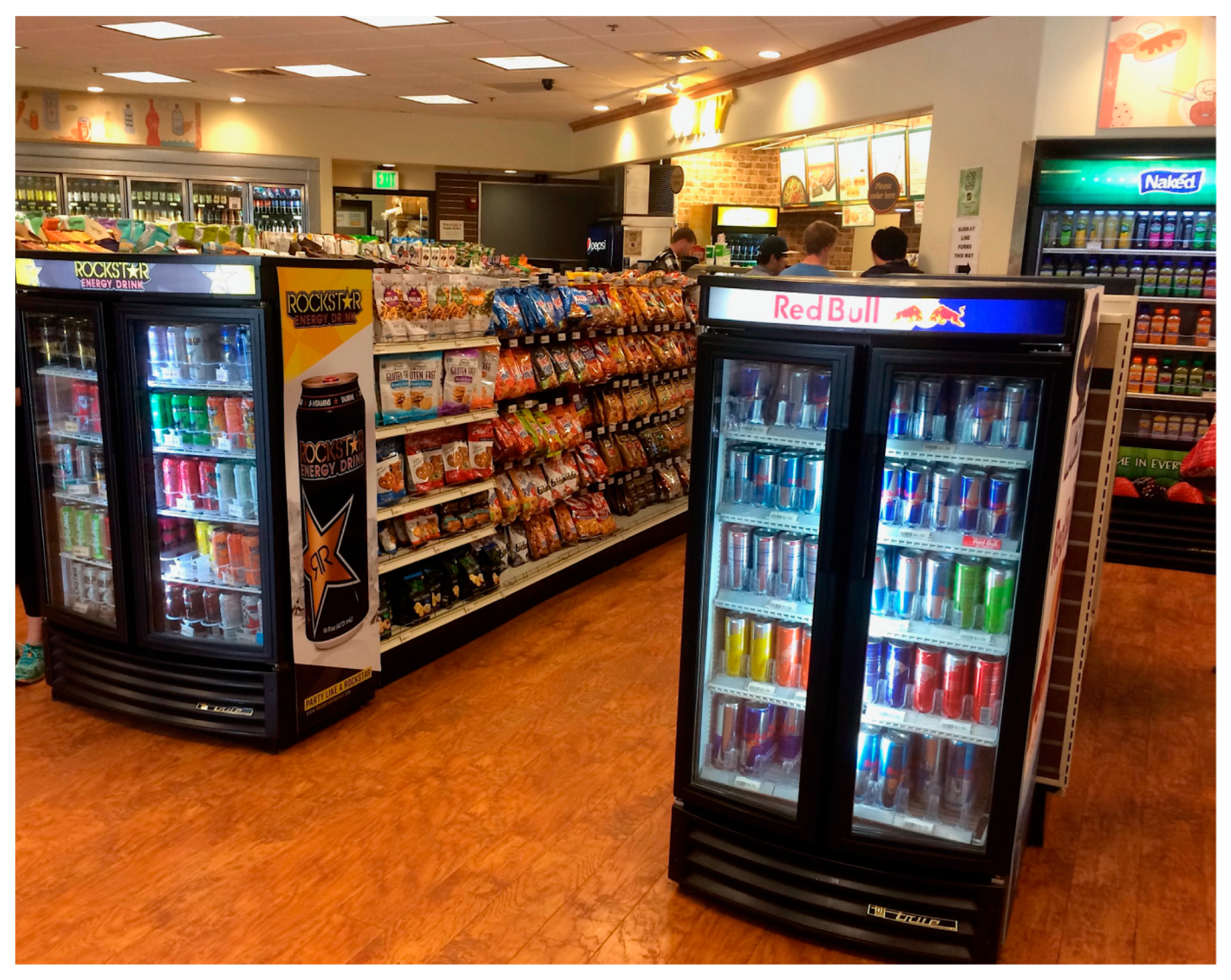
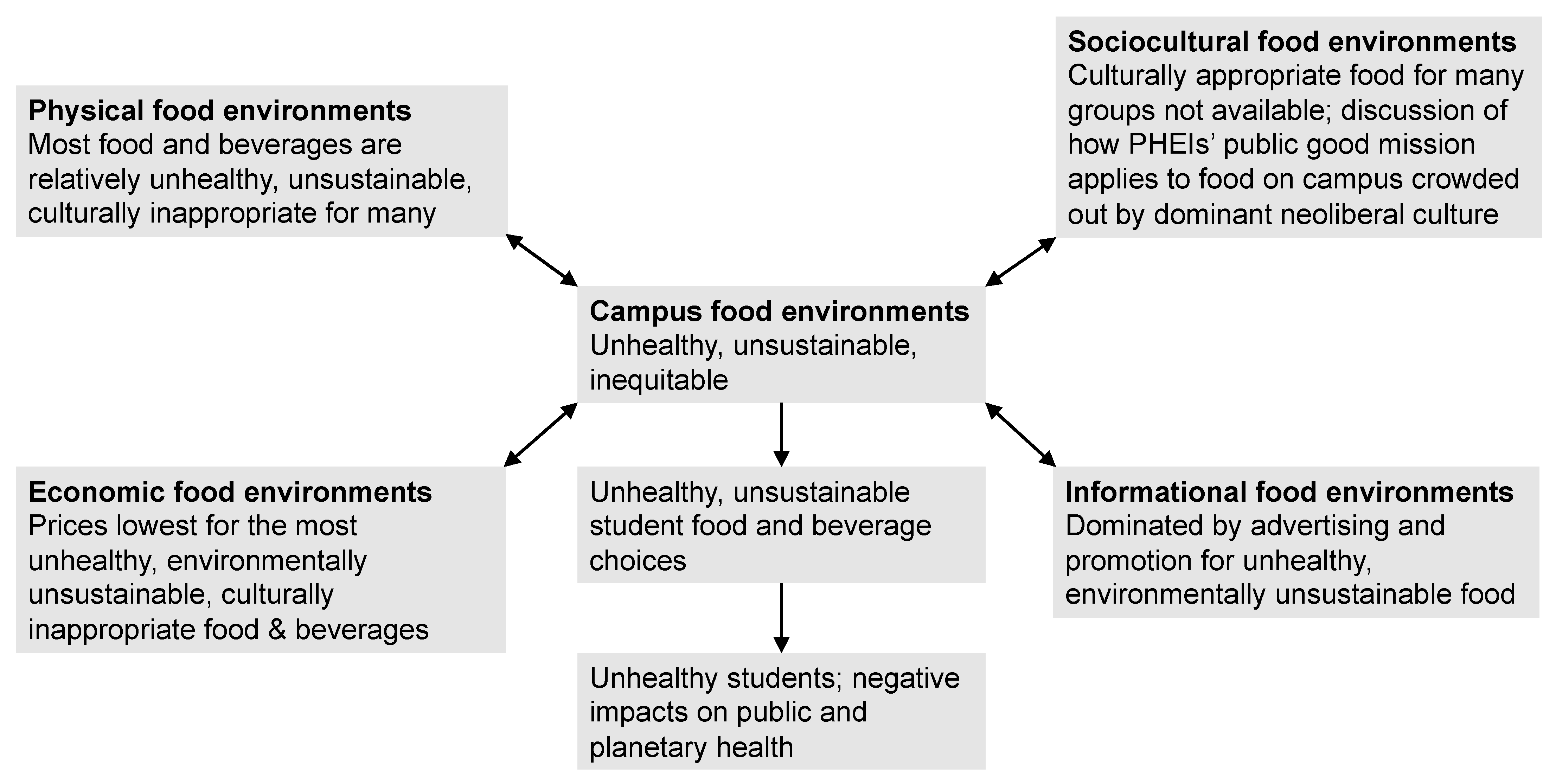
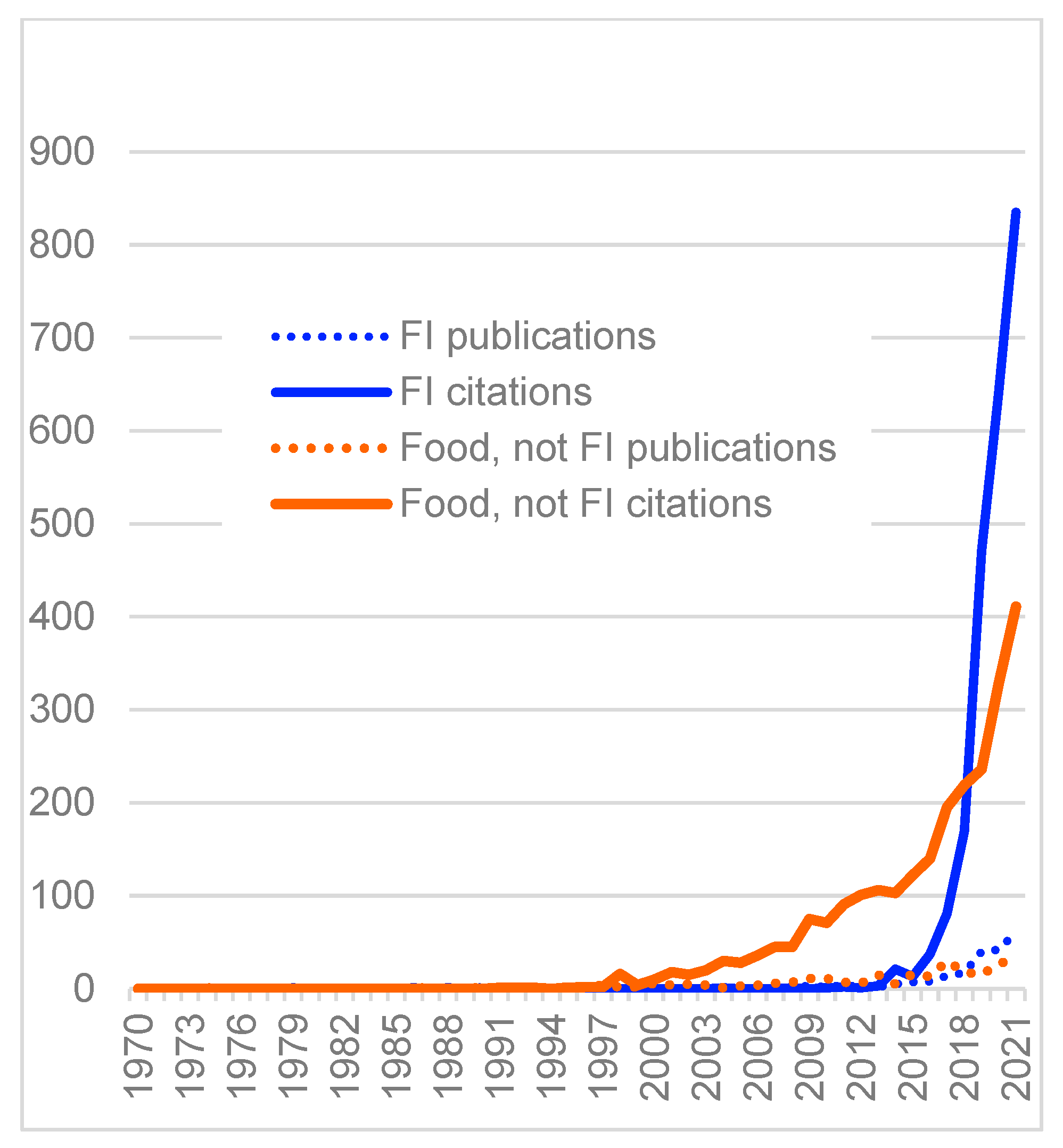
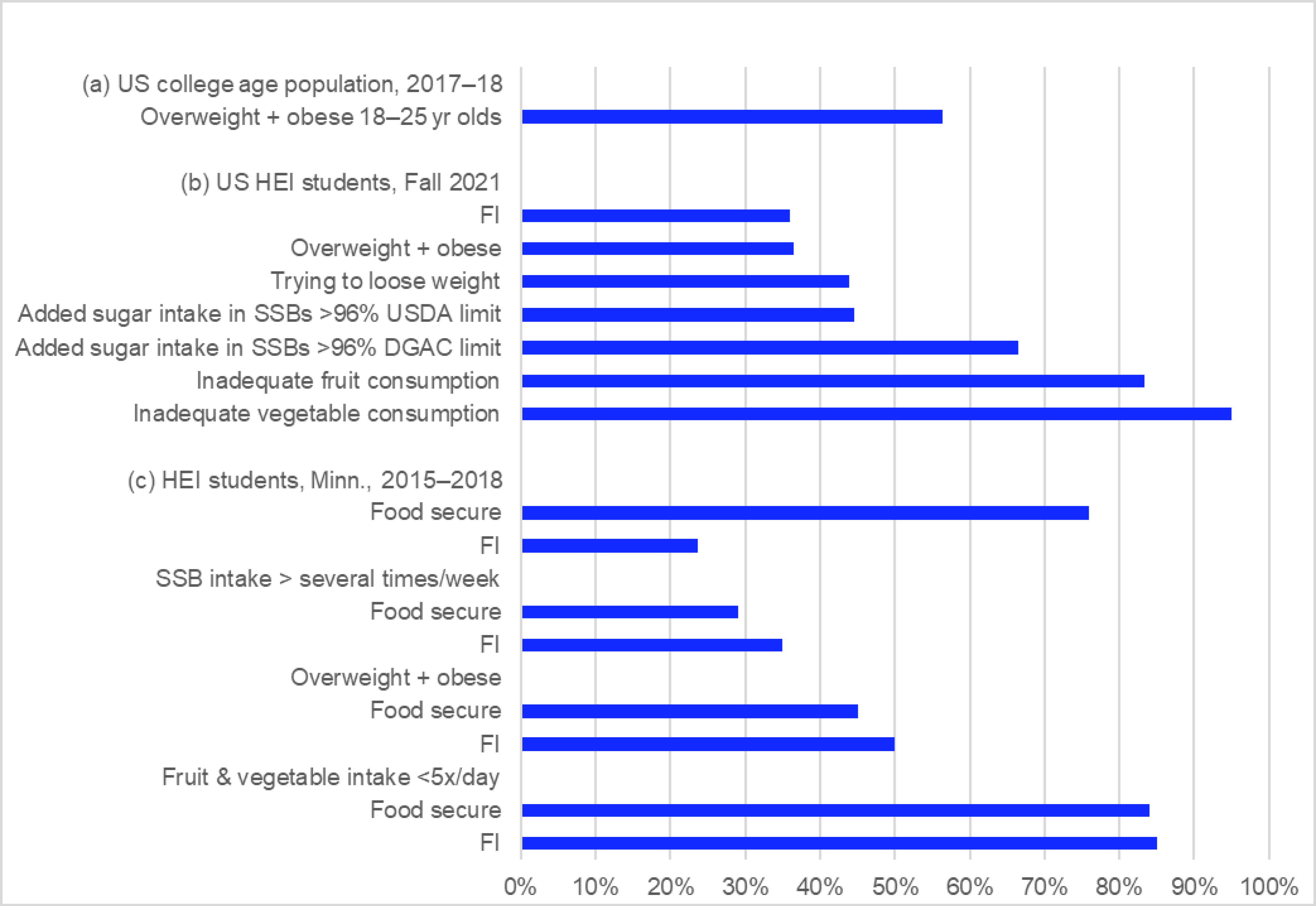
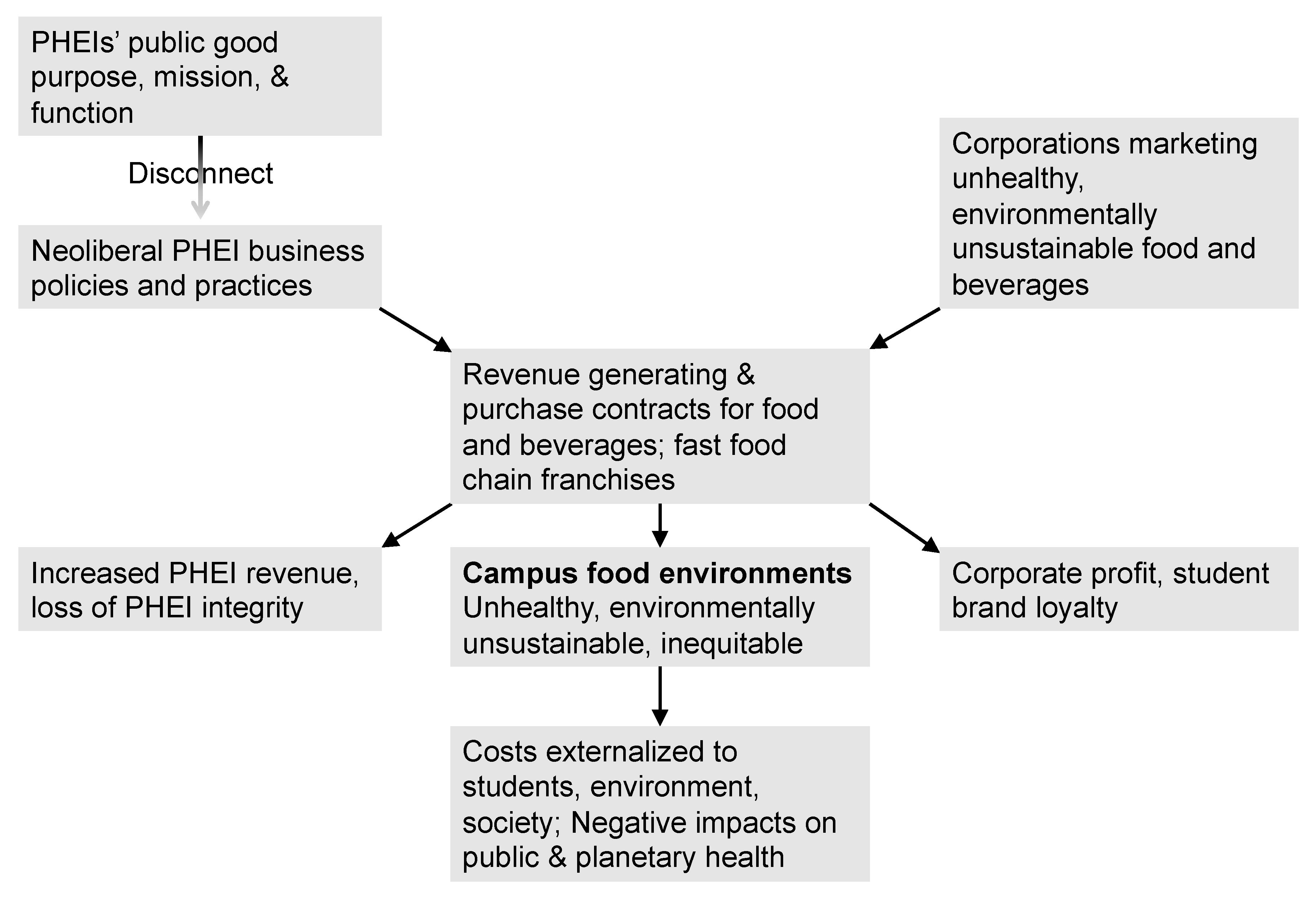
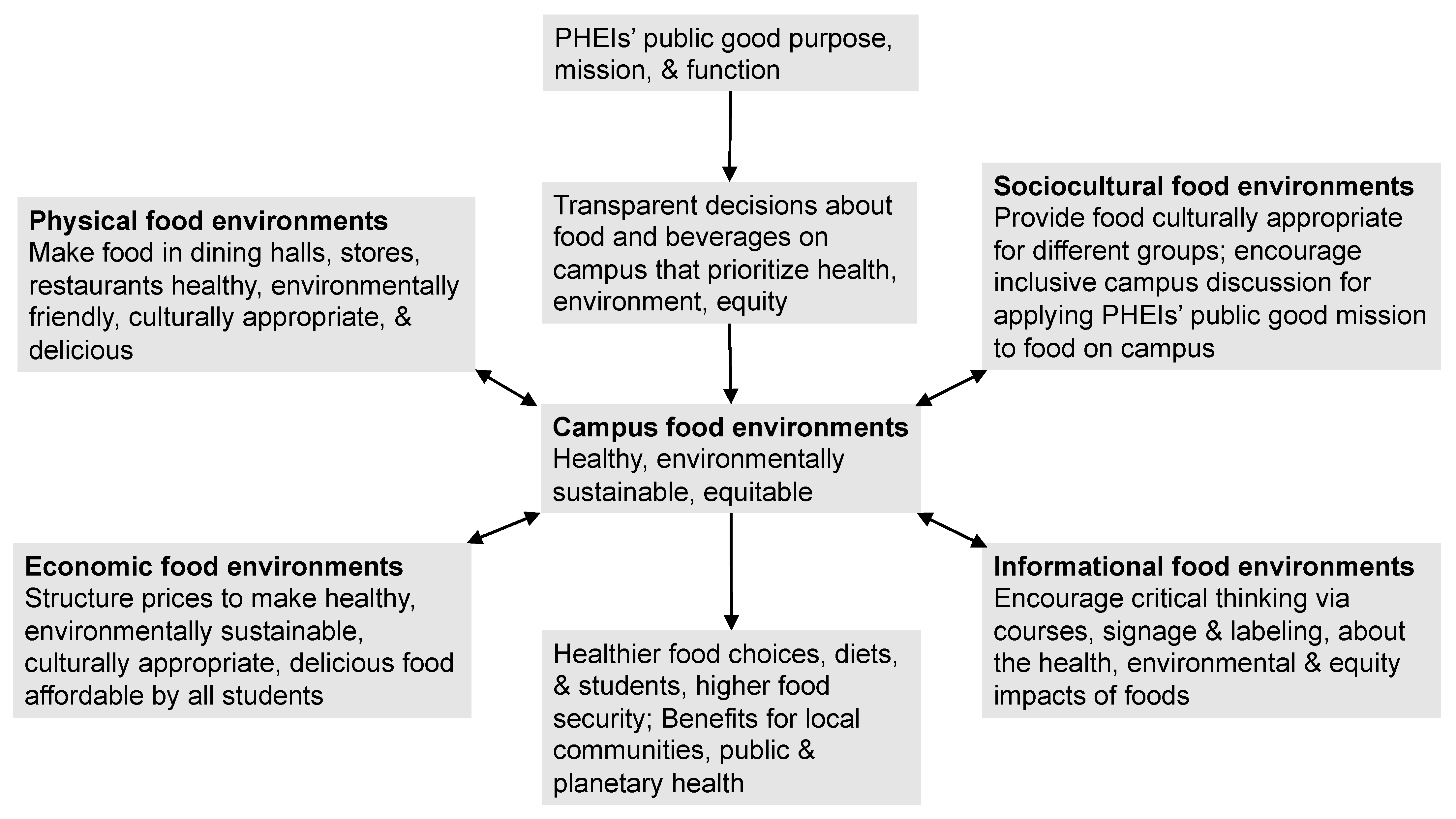
Disclaimer/Publisher’s Note: The statements, opinions and data contained in all publications are solely those of the individual author(s) and contributor(s) and not of MDPI and/or the editor(s). MDPI and/or the editor(s) disclaim responsibility for any injury to people or property resulting from any ideas, methods, instructions or products referred to in the content. |
© 2022 by the author. Licensee MDPI, Basel, Switzerland. This article is an open access article distributed under the terms and conditions of the Creative Commons Attribution (CC BY) license (https://creativecommons.org/licenses/by/4.0/).
Share and Cite
Cleveland, D.A. What’s to Eat and Drink on Campus? Public and Planetary Health, Public Higher Education, and the Public Good. Nutrients 2023, 15, 196. https://doi.org/10.3390/nu15010196
Cleveland DA. What’s to Eat and Drink on Campus? Public and Planetary Health, Public Higher Education, and the Public Good. Nutrients. 2023; 15(1):196. https://doi.org/10.3390/nu15010196
Chicago/Turabian StyleCleveland, David Arthur. 2023. "What’s to Eat and Drink on Campus? Public and Planetary Health, Public Higher Education, and the Public Good" Nutrients 15, no. 1: 196. https://doi.org/10.3390/nu15010196
APA StyleCleveland, D. A. (2023). What’s to Eat and Drink on Campus? Public and Planetary Health, Public Higher Education, and the Public Good. Nutrients, 15(1), 196. https://doi.org/10.3390/nu15010196







